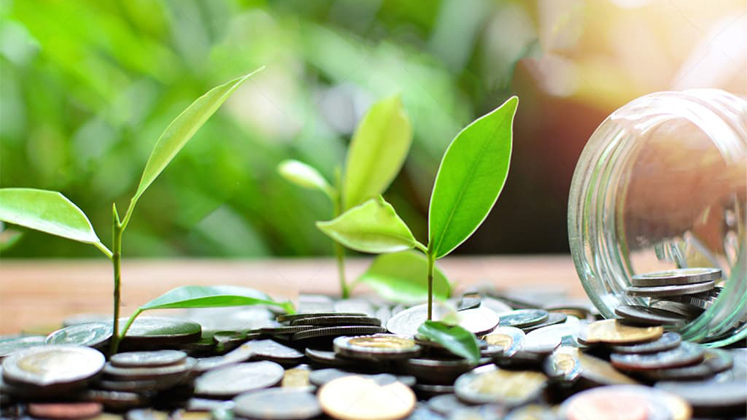
The garment sector is one of Bangladesh’s biggest economic contributors and is also the country’s largest industry. However, the manufacturing of garments is a polluting and water-intensive process. According to an estimate being done a few years ago, washing, dyeing and finishing (WDF) activities are key pillars of the country’s economy even as 1,700 WDF units and 200,000 workers reportedly contributed a net value added of up to 20 per cent to the textile value chain even if despite their profitability, WDF factories were reportedly the second biggest polluter in the country, said to be consuming an annual 1,500 billion litres of groundwater and relying on inadequate wastewater treatment while many mills reportedly used up to 250 to 300 litres of water per kilogram of fabric, far beyond the global best practice of 50 litres per kilogram or less.
In this backdrop, to help the sector adopt eco-friendly technologies and practices, the central bank of the country (Bangladesh Bank), announced plans to earmark US $ 500 million of low-cost ‘green fund’ for textile factories, which follows the recommendations made at a seminar jointly organised by the World Bank Group’s Trade and Competitiveness Global Practice and the Policy Research Institute of Bangladesh (PRI), which was a part of Partnership for Cleaner Textile (PaCT) project, which aims to eliminate the harmful environmental and social impact of groundwater extraction, surface water pollution and misuse of energy and chemical resources in textile wet processing to support the sector’s long-term competitiveness.
Following a series of efforts to improve the resource efficiency of WDF activities, three interim working groups were formed in May 2014 to discuss sector-related regulatory, finance and industry issues. Jointly led by PRI, the working groups met frequently and conducted several diagnostic assessments of regulatory and access to finance issues even as at least six major policy recommendations on finance issues were proposed by working group members to the central bank Governor on 14 February 2015. As a result, US $ 500 million for resource efficiency financing in textile sector was announced by the Bangladesh Bank Governor while the IFC was requested to take a lead role in structuring the fund, in addition to which, it was maintained that all financial institutions in Bangladesh must allocate at least 5 per cent of their lending to green finance by 2016.
Also Read: Are increased exports and rising work orders impacting employment generation too?
However, despite the efforts and being home to highest number of green apparel manufacturing factories globally, Bangladesh was said to be lagging in green financing still, as per the experts, who underlined that despite considerable publicity of green banking, the share of green finance in total bank advances remained poorly over 2 per cent, whereas the Bangladesh Bank guideline suggested the ratio to be at least 5 per cent.
“Our RMG sector is growing rapidly. Bangladesh has the greenest RMG factories in the world. On the other hand, the sector is facing various problems. Day by day, the number of international competitors are increasing, while the cost of production is soaring. Given the situation, the Government should increase incentives to convert factories to green,” maintained Faisal Samad, Managing Director of Savartex Group then, which comprises of a knit vertical integrated industry from fabric production to garments, socks manufacturing facility, design and printing unit even as according to the experts, Bangladesh was spending inadequate fund to implement green projects across the country mainly due to lack of political commitment.
It may be mentioned here that the Bangladesh Bank had introduced a refinance scheme namely Green Transformation Fund amounting to US $ 200 million for the export-oriented industries of textile and leather sectors to set up environment-friendly infrastructures even as the refinance was supposed to provide for water use efficiency in wet processing, water conservation and management, waste management, resource efficiency and recycling, renewable energy, energy efficiency, heat and temperature management, air ventilation and circulation efficiency and work environment improvement initiatives in the export-oriented textiles and leather industries.
Meanwhile, the stakeholders demanded that green finance be made more accessible which can aid Bangladesh in cutting its primary energy consumption by 20 per cent within 2030 under the energy efficiency master plan even if sustainable financing has reportedly gained popularity in recent years as both banks and enterprises in Bangladesh have become increasingly keen to embrace the business model that protects the environment from pollution even if last year, banks and non-bank financial institutions (NBFIs) in Bangladesh reportedly gave out Taka 11,893 crore in green loans, up from 7.11 per cent a year ago, according to data from the central bank.
The amount of green loans disbursed in 2020 would have been much higher if the business slowdown caused by the ongoing Coronavirus pandemic had not hit the economy, a Bangladesh Bank official said, who expressed hopes that the disbursement of green loans would go up this year as the economy is recovering from the pandemic-induced economic downturn in line with the falling rate of infections.
It may be mentioned here that green or sustainable banking is a genre of banking practices which considers all social, environmental and ecological factors with an aim to protect the environment and preserve natural resources and is also known as ethical banking even as some experts suggest that green banking is a new phenomenon in the financial world. Banks as the financing agents of the economic and developmental activities have an important role in promoting overall sustainable development and green banking is the term used by banks to make them much more responsible to the environment even as the term green banking means developing inclusive banking strategies which will ensure sustainable economic development, which entails encouraging environment-friendly investments and give lending priority to those industries which have already turned green or are trying to go green and, thereby, help to restore the natural environment.
Meanwhile, the central bank had taken a decision last year to prepare a sustainability rating for banks and NBFIs to step up green loan disbursements, maintained Chowdhury Liakat Ali, Deputy General Manager of Bangladesh Bank, adding, “The move encourages lenders to give out more loans to entrepreneurs who are keen to convert their industries into green ones,” who further underlined that the central bank selected 10 banks and 5 NBFIs that showed the best performance to disburse green loans even as the rating will be prepared every year, which he feels will certainly motivate all lenders to disburse more green loans.
Besides, Bangladesh Bank has so far rolled out four refinance schemes from its own fund for clients so that they can get loans at a low interest rate, Ali maintained while adding Bangladesh Bank established a revolving refinance scheme amounting to Taka 200 crore from its own fund for solar energy, biogas and ETP projects in 2009 even as the size of the fund was later increased to Taka 400 crore to fulfil the growing demand from borrowers while the interest rate of the fund hovers between 6 and 7 per cent.
Further, as per Chowdhury Liakat Ali, a number of sectors, including garments and textiles, had already shown magnificent performances to set up environmental-friendly industries even as some 338 washing, dyeing, spinning, weaving, and garment factories now save 28.7 billion litres of water a year by adopting solutions provided by the PaCT. Similarly, the factories are saving 2.9 million megawatt-hours of electricity annually and avoiding 558,391 tonnes of carbon emission, according to data from PaCT, which has given technological solutions to industries to set up equipment that allows them to go green.
Meanwhile, speaking to the media, Chief Operating Officer of Fakir Apparels Ltd., Bakhtiar Uddin Ahmed reportedly maintained that his organisation did not take any bank loan to set up the green industry but maintained Fakir Apparels will apply to the Bangladesh Bank to manage a soft loan to set up more green equipment, such as solar panels, etc. He further went on to add that the central bank initiative is excellent beyond a doubt as it has opened a new window for businesses to set up green production units while Syed Mahbubur Rahman, Managing Director of Mutual Trust Bank, said that it was a bit challenging to step up sustainable financing programmes given the poverty level in Bangladesh.
“But we have to speed up the programme as the industrial sector is largely responsible for pollution. On top of that, climate change has already started to take a heavy toll on the environment,” he said while suggesting that the central bank could expand its refinance schemes so that businesses show more interest in taking the soft loans while the Government could also think about giving tax rebates to entrepreneurs who operate green industries, to conclude on a positive note.






